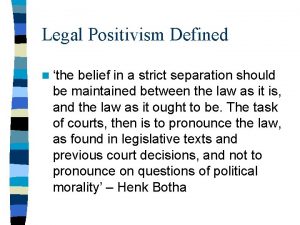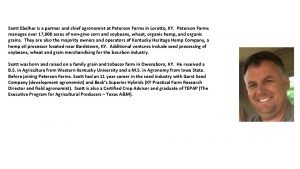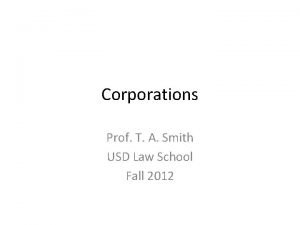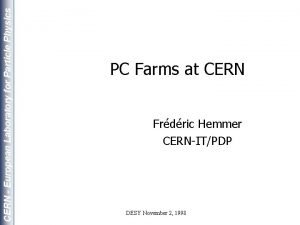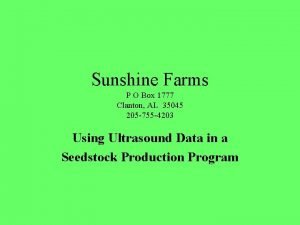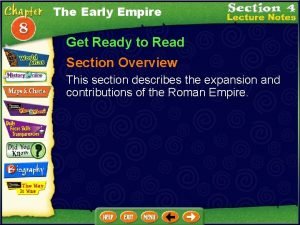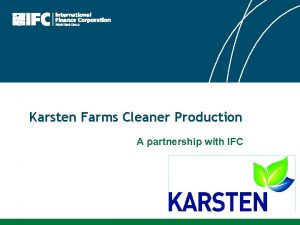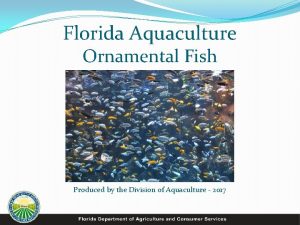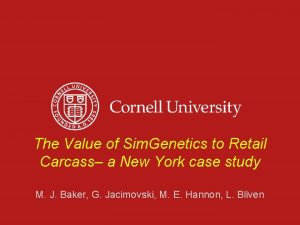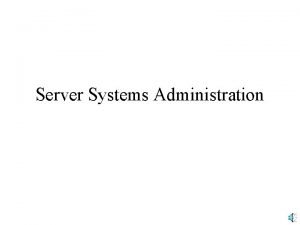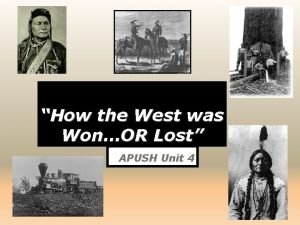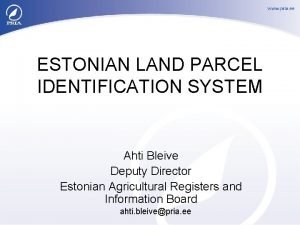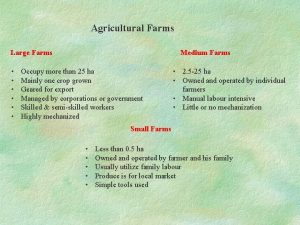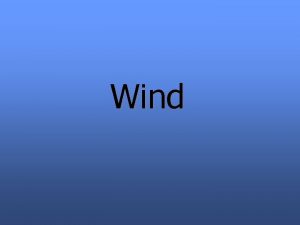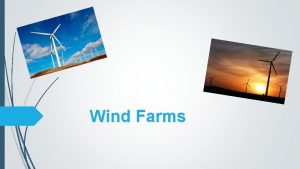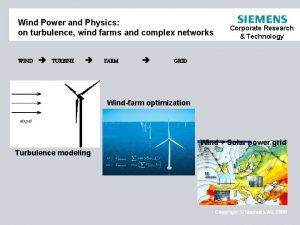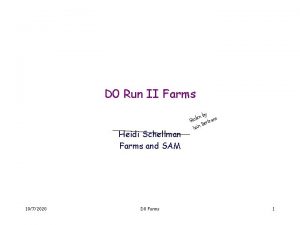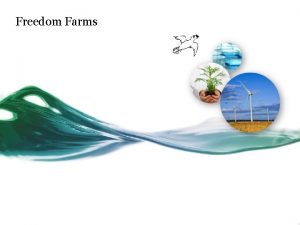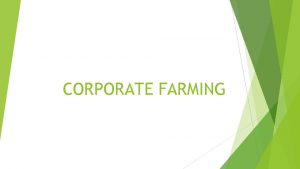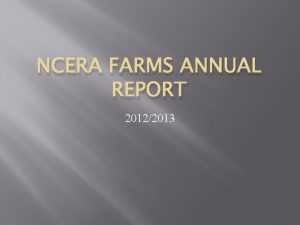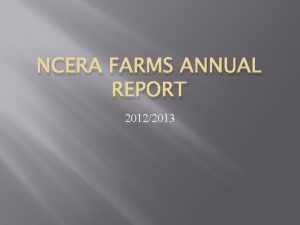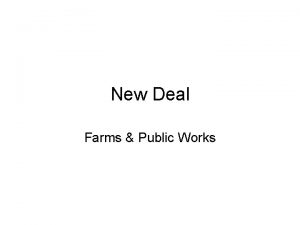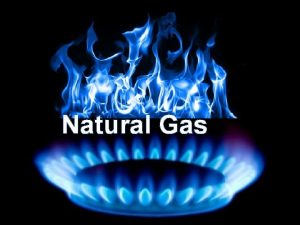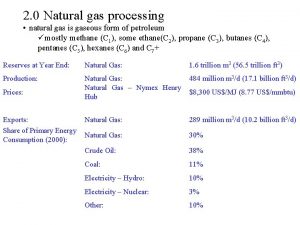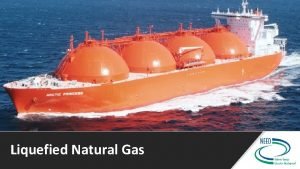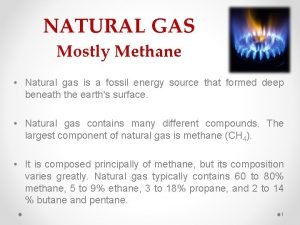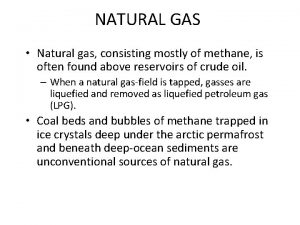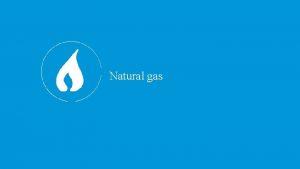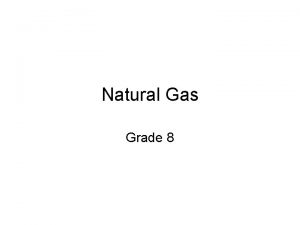Discussion Starter Wind versus Natural Gas Wind farms
































- Slides: 32


Discussion Starter: Wind versus Natural Gas Wind farms are less expensive than natural gas power plants and input costs less (wind is free). Natural gas plants, however, have a higher capacity, so its costs of production can be distributed across more kilowatt-hours of power produced. How is the cost of power determined when inputs vary so widely? The answer has to do with the intricacies of supply curves.

Understanding Profit Total revenue is all the money the firm takes in from its sales, or P×Q. Total cost comprises two types of costs, explicit and implicit.

Explicit Versus Implicit Costs An explicit cost is a cost that involves actually laying out money. An implicit cost does not require an outlay of money; -(it is measured by the value, in dollar terms, of benefits that are forgone. ) College students incur not only explicit costs, such as tuition, but also the implicit cost of forgone income and time

Explicit Versus Implicit Costs The time spent on any activity is an implicit cost equal to the next best alternative for which you could have used that time.

Accounting Profit Versus Economic Profit The accounting profit of a business is the business’s total revenue minus the explicit cost and depreciation. The economic profit of a business is the business’s total revenue minus the opportunity cost of its resources. It is usually less than the accounting profit.

QUICK QUIZ • You’re a musician that gives banjo lessons on the side for $20 an hour. One day, you spend 10 hours recording music that cost $100. • What is your opportunity cost? • What cost would your accountant measure? • If the record yield $200 in sales, do you earn an accounting profit? • Do you earn an economic profit?

Normal Profit An economic profit equal to zero is also known as a normal profit. Normal profit is an economic profit just high enough to keep a firm engaged in its current activity. A firm with zero economic profit (normal profit) may have positive or negative accounting profit.

Profit Maximization Now that you know what profits are, how do you make the bigger?

Maximizing Profit At a price of $18 per bushel, profit (TR – TC) for these organic tomato farmers is maximized when quantity supplied is 5.

Using Marginal Analysis to Maximize Profits According to the principle of marginal analysis, every activity should continue until the marginal benefit equals the marginal cost. - Simply put you can figure out max profits with less math

Defining Marginal Revenue Marginal revenue is the change in total revenue generated by an additional unit of output.

Finding Optimal Output with Marginal Analysis The optimal output rule says that profit is maximized by To put the it simply producing quantity at which the marginal revenue of the last unit MR=MC produced equals its marginal cost. For, Jennifer and Jason should, 5 bushels is profit-maximizing because at 6 bushels, marginal cost would begin exceed marginal revenue.

When Is Production Profitable? A firm’s long-run decision to produce or not—to stay in business or to close down permanently— should be based on economic profit, not accounting profit. A firm is profitable (and should therefore remain in business) when selling the firm’s optimal quantity of output at the market price results in at least a normal profit (i. e. , at least an economic profit of zero).

The Production Function A production function is the relationship between the quantity of inputs a firm uses and the quantity of output it produces.

Production with Fixed and Variable Inputs A fixed input is an input whose quantity cannot be varied for a period of time. The long run is the time period in which all inputs can be varied. A variable input is an input whose quantity the firm can vary at any time. The short run is the time period in which at least one input is fixed.

Production Function Graph

Production with Fixed and Variable Inputs The production function is the relationship between the quantity of the variable input and the quantity of output for a given quantity of the fixed input. The total product curve shows the production function graphically.

The Marginal Product of …. . The marginal product of an input is the additional quantity of output produced by using one more unit of that input.

Summary and Review 1) What is the relationship between the quantity of inputs a firm uses and the quantity of output it produces? A production function. 2) What is an input whose quantity cannot be varied for a period of time? A fixed input. 3) What is an input whose quantity the firm can vary at any time? A variable input.

Summary and Review 4) What is true of some inputs in the short run? In the short run, some inputs are fixed. 5) What is true of inputs in the long run? In the long run, all inputs are variable.

Summary and Review 6) What does the total product curve show? How the quantity of output depends on the quantity of the variable input for a given quantity of the fixed input. 7) What is the marginal product of an input? The additional quantity of output produced by using one more unit of that input.

Summary and Review 8) Why does the marginal product of labor curve usually slope downward? Because there are diminishing returns to labor. 9) What happens to the total product curve and the marginal product curve if there is an increase in the fixed input? Both curves shift upward.

Walkthrough: Free-Response Question 1 1. Draw a correctly labeled graph of a production function that exhibits diminishing returns to labor. Assume labor is the variable input and capital is the fixed input. Explain how your graph illustrates diminishing returns to labor. (4 points) 1 point: Graph with vertical axis labeled “Quantity of output” or “Q” and horizontal axis labeled “Quantity of labor” or “L” 1 point: Upward-sloping curve labeled “Total product” or “TP” 1 point: The slope of the total product curve is positive and decreasing. 1 point: A positive and decreasing slope illustrates diminishing returns to labor because each additional unit of labor increases total product by less than the previous unit of labor.

Summary and Review 1) What is total revenue minus total cost called? Profit. 2) How is the profit maximizing quantity found? The optimal output rule says that profit is maximized by producing the quantity at which the marginal revenue of the last unit produced equals its marginal cost.

Summary and Review 3) How is marginal revenue defined? The change in total revenue generated by an additional unit of output. 4) According to the principle of marginal analysis, every activity should continue until _______________. the marginal benefit equals the marginal cost

Summary and Review 5) What does the marginal cost curve show? How the cost of producing one more unit depends on the quantity that has already been produced. 6) What does the marginal revenue curve show? How marginal revenue varies as output varies.

Walkthrough: Free-Response Question 1 1. Use the data in the table provided to answer the following questions. a. What is the marginal revenue of the fourth unit? b. Calculate profit at a quantity of two. Explain how you calculated the profit. c. What is the profit-maximizing level of output? Explain how to use the optimal output rule to determine the profitmaximizing level of output. (5 points) 1 point: $18 1 point: $7 1 point: $36 – $29 or TR – TC 1 point: 5 units 1 point: The optimal output rule states that profit is maximized when MR = MC. Here, MR never exactly equals MC, so in this case, the firm should produce the largest quantity at which MR exceeds MC. At a quantity of 5, MC = $16 and MR = $18. For the sixth unit, MC = $22 and MR = $18, and because MC > MR, the sixth unit would add more to total cost than it would to total revenue, so it should not be produced.

Summary and Review 1) What type of cost requires you to actually lay out money? An explicit cost. 2) What are cost equals the benefits foregone by any decision? An implicit cost. 3) What type of profit equals revenue minus explicit costs? Accounting profit.

Summary and Review 4) What type of profit equals revenue minus the opportunity cost of a businesses resources? Economic profit. 5) What is the implicit cost of capital? The opportunity cost of the capital used by a business. In other words, the income the owner could have realized from that capital if it had been used in its next best alternative way.

Summary and Review 5) What is profit called when economic profit is zero? Normal profit.

Walkthrough: Free-Response Question 1 1. Your firm is selling 10, 000 units of output at a price of $10 per unit. Your firm’s total explicit cost is $70, 000. Your firm’s implicit cost of capital is $10, 000, and your opportunity cost is $20, 000. a. Calculate total revenue. b. Calculate total implicit cost. c. Calculate your accounting profit. d. Calculate your economic profit. e. Given the value of your economic profit calculated in part d, might there be a better use of your resources? Explain your answer. (5 points) 1 point: Total revenue = 1 point: Economic profit = $0 $100, 000 1 point: Total implicit cost = $30, 000 1 point: Accounting profit = $30, 000 1 point: No. Because your firm earns normal profit, there is no better alternative use for your resources.
 Positives and negatives of fossil fuels
Positives and negatives of fossil fuels Conclusion of distillation
Conclusion of distillation Legal positivism definition
Legal positivism definition Gone with the wind discussion questions
Gone with the wind discussion questions Wilshire farms swim team
Wilshire farms swim team Ted hudson burnbrae farms
Ted hudson burnbrae farms Peterson farms loretto ky
Peterson farms loretto ky Seva farms
Seva farms Kiwiw farms
Kiwiw farms Redmere farms
Redmere farms Folo farms
Folo farms Jolivette family farms
Jolivette family farms Gorton v doty
Gorton v doty Pc farms
Pc farms Crystal ball farms
Crystal ball farms Cbre chicago multifamily
Cbre chicago multifamily Calves clanton
Calves clanton Floral shops bookstores and farms are examples of
Floral shops bookstores and farms are examples of What products came from the farms of italy gaul and spain
What products came from the farms of italy gaul and spain Karsten farms
Karsten farms Imagination farms
Imagination farms Florida cichlid farms
Florida cichlid farms Wilson beef farms canaseraga ny
Wilson beef farms canaseraga ny Types of server farms
Types of server farms Seeland farms
Seeland farms Global ag investing
Global ag investing Bonanza farms apush
Bonanza farms apush Ahti farms
Ahti farms Love apple farms
Love apple farms Kurshalter
Kurshalter Pseudo reduced specific volume
Pseudo reduced specific volume Imaginary gas
Imaginary gas Differences between ideal gas and real gas
Differences between ideal gas and real gas


